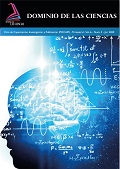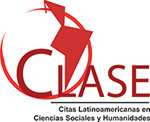Hidrolización de plumas de pollos, mediante microorganismos: Una revisión
DOI:
https://doi.org/10.23857/dc.v6i3.1334Resumen
Los residuos de la industria avícola son fuentes de contaminación si no se gestionan correctamente, incluyen desechos, vísceras, sangre y plumas, constituyéndose en residuos peligrosos por sus afecciones al ambiente. Las plumas, mayoritariamente estón constituidas por queratina, una proteína recalcitrante, que es hidrolizada por queratinasas, enzimas microbianas que se presentan como una alternativa económica y amigable con el ambiente para degradar los desechos ricos en queratina. Una variedad de microorganismos a saber, tienen potencial para su aplicación en la biotecnología, con la finalidad de tratar desechos provenientes del procesamiento de aves. Varios microorganismos estón involucrados en la hidrolización de las plumas de aves, entre los que se encuentran diferentes especies del género Bacillus, ademós también Pseudomonas sp., Streptomyces sp., Rhodococcus erythropolis, Aspergillus, Fusarium oxysporum y Aspergillus sp. Es necesario continuar con mós investigaciones, con la finalidad de evaluar el efecto de consorcios microbianos en la degradación de plumas. El objetivo fundamental de esta investigación bibliogrófica fue determinar los principales microorganismos involucrados en la hidrólisis de plumas de pollos.
Citas
Abatenh, E; Gizaw, B; Tsegaye, Z; Wassie, M. 2017. The role of microorganisms in bioremediation- A Review. Open Journal of Environmental Biology 2(1):038-046. DOI: https://doi.org/10.17352/ojeb.000007.
Abdel-Fattah, AM; El-Gamal, MS; Ismail, SA; Emran, MA; Hashem, AM. 2018. Biodegradation of feather waste by keratinase produced from newly isolated Bacillus licheniformis ALW1 (en línea). Journal of Genetic Engineering and Biotechnology 16(2):311-318. DOI: https://doi.org/10.1016/j.jgeb.2018.05.005.
Adelere, IA; Lateef, A. 2019. Degradation of keratin biomass by different microorganisms (en línea). In Sharma, S; Kumar, A (eds.). s.l., Springer, Cham. p. 187-200 DOI: https://doi.org/10.1007/978-3-030-02901-2.
Adetunji, CO; Adejumo, IO. 2018. Efficacy of crude and immobilized enzymes from Bacillus licheniformis for production of biodegraded feather meal and their assessment on chickens (en línea). Environmental Technology and Innovation 11:116-124. DOI: https://doi.org/10.1016/j.eti.2018.05.002.
Alahyaribeik, S; Sharifi, S davood; Tabandeh, F; Honarbakhsh, S; Ghazanfari, S. 2020. Bioconversion of chicken feather wastes by keratinolytic bacteria (en línea). Process Safety and Environmental Protection 135:171-178. DOI: https://doi.org/10.1016/j.psep.2020.01.014.
Athrey, G. 2020. Poultry genetics and breeding. Animal Agriculture :317-330.
Azari, AA; Kouroshzadeh, N; Pordeli, H. 2019. Keratinase Producing Bacteria: A Promising Approach for Poultry Waste Management. International Journal of Molecular and Clinical Microbiology 9(1):1090-1096.
Banerjee, G; Ray, AK. 2017. Impact of microbial proteases on biotechnological industries (en línea). Biotechnology and Genetic Engineering Reviews 33(2):119-143. DOI: https://doi.org/10.1080/02648725.2017.1408256.
Bhari, R; Kaur, M; Singh, RS; Pandey, A; Larroche, C. 2018. Bioconversion of chicken feathers by Bacillus aerius NSMk2: A potential approach in poultry waste management (en línea). Bioresource Technology Reports 3:224-230. DOI: https://doi.org/10.1016/j.biteb.2018.07.015.
Brandelli, A; Sala, L; Kalil, SJ. 2015. Microbial enzymes for bioconversion of poultry waste into added-value products (en línea). Food Research International 73:3-12. DOI: https://doi.org/10.1016/j.foodres.2015.01.015.
Callegaro, K; Welter, N; Daroit, DJ. 2018. Feathers as bioresource: Microbial conversion into bioactive protein hydrolysates (en línea). Process Biochemistry 75:1-9. DOI: https://doi.org/10.1016/j.procbio.2018.09.002.
Cheong, CW; Ahmad, SA; Ooi, PT; Phang, LY. 2017. Treatment of chicken feather waste. Pertanika Journal of Scholarly Research Reviews. 3(1):32-41.
Das, S; Lee, SH; Kumar, P; Kim, KH; Lee, SS; Bhattacharya, SS. 2019. Solid waste management: Scope and the challenge of sustainability (en línea). Journal of Cleaner Production 228:658-678. DOI: https://doi.org/10.1016/j.jclepro.2019.04.323
Ferrareze, PAG; Correa, APF; Brandelli, A. 2016. Purification and characterization of a keratinolytic protease produced by probiotic Bacillus subtilis (en línea). Biocatalysis and Agricultural Biotechnology 7:102-109. DOI: https://doi.org/10.1016/j.bcab.2016.05.009.
Ferreira, A; Kunh, SS; Cremonez, PA; Dieter, J; Teleken, JG; Sampaio, SC; Kunh, PD. 2018. Brazilian poultry activity waste: Destinations and energetic potential (en línea). Renewable and Sustainable Energy Reviews 81(Part 2):3081-3089. DOI: https://doi.org/10.1016/j.rser.2017.08.078.
Ferronato, N; Rada, EC; Gorritty Portillo, MA; Cioca, LI; Ragazzi, M; Torretta, V. 2019. Introduction of the circular economy within developing regions: A comparative analysis of advantages and opportunities for waste valorization (en línea). Journal of Environmental Management 230:366-378. DOI: https://doi.org/10.1016/j.jenvman.2018.09.095.
Ghosh, A; Chakrabarti, K; Chattopadhyay, D. 2008. Degradation of raw feather by a novel high molecular weight extracellular protease from newly isolated Bacillus cereus DCUW. Journal of Industrial Microbiology and Biotechnology 35:825-834. DOI: https://doi.org/10.1007/s10295-008-0354-5.
Gopinath, SCB; Anbu, P; Lakshmipriya, T; Tang, T-H; Chen, Y; Hashim, U; Ruslinda, AR; Arshad, MKM. 2015. Biotechnological Aspects and Perspective of Microbial Keratinase Production. BioMed Research International :1-10. DOI: https://doi.org/10.1155/2015/140726
Gupta, R; Ramnani, P. 2006. Microbial keratinases and their prospective applications: An overview. Appl Microbiol Biotechnol 70:21-33. DOI: https://doi.org/10.1007/s00253-005-0239-8.
Halkos, GE; Petrou, KN. 2016. Moving towards a circular economy: Rethinking waste management practices (en línea). Economic and Social Thought 3(2):220-240. DOI: https://doi.org/10.1453/jest.v3i2.854.
Hassan, MA; Abol-Fotouh, D; Omer, AM; Tamer, TM; Abbas, E. 2020. Comprehensive insights into microbial keratinases and their implication in various biotechnological and industrial sectors: A review (en línea). International Journal of Biological Macromolecules 154(1):567-583. DOI: https://doi.org/10.1016/j.ijbiomac.2020.03.116.
Holkar, CR; Jain, SS; Jadhav, AJ; Pinjari, D V. 2018. Valorization of keratin based waste (en línea). Process Safety and Environmental Protection 115:85-98. DOI: https://doi.org/10.1016/j.psep.2017.08.045.
Ichida, JM; Krizova, L; LeFevre, CA; Keener, HM; Elwell, DL; Burtt, EHEH. 2001. Bacterial inoculum enhances keratin degradation and biofilm formation in poultry compost. Journal of Microbiological Methods 47(2):199-208. DOI: https://doi.org/10.1016/S0167-7012(01)00302-5.
Iruolaje, OF; Ogbeba, J., Y; Tula, M., A; Ijebor, J; A. Dogo, B. 2015. Isolation and Identification of Keratinolytic Bacteria that Exhibit Feather-degrading Potentials. Journal of Advances in Biology & Biotechnology 5(2):1-9. DOI: https://doi.org/https://doi.org/10.9734/JABB/2016/22082.
Jayathilakan, K; Sultana, K; Radhakrishna, K; Bawa, AS. 2012. Utilization of byproducts and waste materials from meat , poultry and fish processing industries : a review. J Food Sci Technol (May–June 49(3):278-293. DOI: https://doi.org/10.1007/s13197-011-0290-7.
Joardar, JC; Rahman, MM. 2018. Poultry feather waste management and effects on plant growth (en línea). International Journal of Recycling of Organic Waste in Agriculture 7:183-188. DOI: https://doi.org/10.1007/s40093-018-0204-z.
Korniłłowicz-Kowalska, T; Bohacz, J. 2011. Biodegradation of keratin waste: Theory and practical aspects. Waste Management 31(8):1689-1701. DOI: https://doi.org/10.1016/j.wasman.2011.03.024.
Kothari, D; Rani, A; Goyal, A. 2017. Keratinases. Current Developments in Biotechnology and Bioengineering :447-467. DOI: https://doi.org/10.1016/B978-0-444-63662-1.00019-1.
Kumar, BL; Gopal, DVRS. 2015. Effective role of indigenous microorganisms for sustainable environment (en línea). 3 Biotech 5:867-876. DOI: https://doi.org/10.1007/s13205-015-0293-6.
Lakshmi, V V.; Devi, DA; Rani, KPJ. 2020. Wealth from Poultry Waste. In Ghosh, S (ed.). Singapore, Springer,. p. 67-76 DOI: https://doi.org/10.1007/978-981-15-1620-7.
Lange, L; Huang, Y; Busk, PK. 2016. Microbial decomposition of keratin in nature—a new hypothesis of industrial relevance. Applied Microbiology and Biotechnology 100:2083-2096. DOI: https://doi.org/10.1007/s00253-015-7262-1.
Li, Q. 2019. Progress in Microbial Degradation of Feather Waste. Frontiers in Microbiology 10:1-15. DOI: https://doi.org/10.3389/fmicb.2019.02717.
Li, Z-W; Liang, S; Ke, Y; Deng, J-J; Zhang, M-S; Lu, D-L; Li, J-Z; Luo, X-C. 2020. The feather degradation mechanisms of a new Streptomyces sp. isolate SCUT-3. Communications Biology 3(191):1-13. DOI: https://doi.org/10.1038/s42003-020-0918-0.
Maciel, JL; Werlang, PO; Daroit, DJ; Brandelli, A. 2016. Characterization of protein-rich hydrolysates produced through microbial conversion of waste feathers. Waste and Biomass Valorization 8:1177-1186. DOI: https://doi.org/10.1007/s12649-016-9694-y.
Mazotto, AM; Ascheri, JLR; De Oliveira Godoy, RL; Triches Damaso, MC; Couri, S; Vermelho, AB. 2017. Production of feather protein hydrolyzed by B. subtilis AMR and its application in a blend with cornmeal by extrusion (en línea). LWT - Food Science and Technology 84:701-709. DOI: https://doi.org/10.1016/j.lwt.2017.05.077.
Mazotto, AM; Couri, S; Damaso, Mí´CT; Vermelho, AB. 2013. Degradation of feather waste by Aspergillus niger keratinases: Comparison of submerged and solid-state fermentation (en línea). International Biodeterioration and Biodegradation 85:189-195. DOI: https://doi.org/10.1016/j.ibiod.2013.07.003.
Do Nascimento, CDV; Filho, RAP; Artur, AG; Costa, MCG. 2015. Application of poultry processing industry waste: A strategy for vegetation growth in degraded soil (en línea). Waste Management 36:316-322. DOI: https://doi.org/10.1016/j.wasman.2014.11.001.
Ozdemir, S; Yetilmezsoy, K. 2020. A mini literature review on sustainable management of poultry abattoir wastes (en línea). Journal of Material Cycles and Waste Management 22:11-21. DOI: https://doi.org/10.1007/s10163-019-00934-1.
Pandey, SC; Pande, V; Sati, D; Gangola, S; Kumar, S; Pandey, A; Samant, M. 2019. Microbial keratinase: A tool for bioremediation of feather waste (en línea). s.l., Elsevier Inc. 217-253 p. DOI: https://doi.org/10.1016/B978-0-12-818307-6.00013-5.
Patchaye, M; Sundarkrishnan, B; Tamilselvan, S; Sakthivel, N. 2018. Microbial management of organic waste in agroecosystem. In Panpatte D., Jhala Y., Shelat H., VR (ed.). Singapur, Springer. p. 45-73 DOI: https://doi.org/10.1007/978-981-10-7146-1_3.
Patinvoh, RJ; Feuk-Lagerstedt, E; Lundin, M; Sárvári Horváth, I; Taherzadeh, MJ. 2016. Biological Pretreatment of Chicken Feather and Biogas Production from Total Broth (en línea). Appl Biochem Biotechnol 180:1401-1415. DOI: https://doi.org/10.1007/s12010-016-2175-8.
Peng, Z; Mao, X; Zhang, J; Du, G; Chen, J. 2019. Effective biodegradation of chicken feather waste by co-cultivation of keratinase producing strains (en línea). Microbial Cell Factories 18(84):1-11. DOI: https://doi.org/10.1186/s12934-019-1134-9.
Pohlmann, CR; Scavarda, AJ; Alves, MB; Korzenowski, AL. 2020. The role of the focal company in sustainable development goals: A Brazilian food poultry supply chain case study (en línea). Journal of Cleaner Production 245:118798. DOI: https://doi.org/10.1016/j.jclepro.2019.118798.
Preczeski, KP; Dalastra, C; Czapela, FF; Kubeneck, S; Scapini, T; Camargo, AF; Zanivan, J; Bonatto, C; Stefanski, FS; Venturin, B; Fongaro, G; Treichel, H. 2020. Fusarium oxysporum and Aspergillus sp. as Keratinase Producers Using Swine Hair From Agroindustrial Residues. Frontiers in Bioengineering and Biotechnology 8(71):1-8. DOI: https://doi.org/10.3389/fbioe.2020.00071.
Ranta, V; Aarikka-Stenroos, L; Mí¤kinen, SJ. 2018. Creating value in the circular economy: A structured multiple-case analysis of business models. Journal of Cleaner Production 201:988-1000. DOI: https://doi.org/10.1016/j.jclepro.2018.08.072.
Rieger, TJ; De Oliveira, CT; Pereira, JQ; Brandelli, A; Daroit, DJ. 2017. Proteolytic system of Bacillus sp. CL18 is capable of extensive feather degradation and hydrolysis of diverse protein substrates (en línea). British Poultry Science 58(3):329-335. DOI: https://doi.org/10.1080/00071668.2017.1293229.
Seidavi, A., Zaker-Esteghamati, H., & Scanes, C. 2019. Chicken processing: Impact, co-products and potential. World’s Poultry Science Journal 75(1):55-68. DOI: https://doi.org/10.1017/S0043933918000764.
Shah, A; Tyagi, S; Bharagava, RN; Belhaj, D; Kumar, A; Saxena, G; Saratale, GD; Mulla, SI. 2019. Keratin Production and Its Applications: Current and Future Perspective (en línea). In Sharma, S; Kumar, A (eds.). s.l., Springer Series on Polymer and Composite Materials. p. 19-34 DOI: https://doi.org/10.1007/978-3-030-02901-2.
Sharma, R; Devi, S. 2018. Versatility and commercial status of microbial keratinases: a review. Reviews in Environmental Science and Biotechnology 17:19-45. DOI: https://doi.org/10.1007/s11157-017-9454-x.
Da Silva, RR. 2017. Bacterial and fungal proteolytic enzymes: Production, catalysis and potential applications. Applied Biochemistry and Biotechnology 183:1-19. DOI: https://doi.org/10.1007/s12010-017-2427-2.
Singh, R; Kumar, M; Mittal, A; Mehta, PK. 2016. Microbial enzymes: industrial progress in 21st century. 3 Biotech 6(174):1-15. DOI: https://doi.org/10.1007/s13205-016-0485-8.
Sinkiewicz, I; Śliwińska, A; Staroszczyk, H; Kołodziejska, I. 2017. Alternative Methods of Preparation of Soluble Keratin from Chicken Feathers. Waste Biomass Valor 8:1043-1048. DOI: https://doi.org/10.1007/s12649-016-9678-y.
Srivastava, B; Khatri, M; Singh, G; Arya, SK. 2020. Microbial keratinases: An overview of biochemical characterization and its eco-friendly approach for industrial applications. Journal of Cleaner Production 252:119847. DOI: https://doi.org/10.1016/j.jclepro.2019.119847.
Stiborova, H; Branska, B; Vesela, T; Lovecka, P; Stranska, M; Hajslova, J; Jiru, M; Patakova, P; Demnerova, K. 2016. Transformation of raw feather waste into digestible peptides and amino acids. Journal of Chemical Technology and Biotechnology 91:1629-1637. DOI: https://doi.org/10.1002/jctb.4912.
Tamreihao, K; Mukherjee, S; Khunjamayum, R; Devi, LJ; Asem, RS; Ningthoujam, DS. 2019. Feather degradation by keratinolytic bacteria and biofertilizing potential for sustainable agricultural production. Journal of Basic Microbiology 59:4-13. DOI: https://doi.org/10.1002/jobm.201800434.
Tesfaye, T; Sithole, B; Ramjugernath, D. 2018. Valorisation of waste chicken feathers: Optimisation of decontamination and pre-treatment with bleaching agents using response surface methodology (en línea). Sustainable Chemistry and Pharmacy 8:21-37. DOI: https://doi.org/10.1016/j.scp.2018.02.003.
Tesfaye, T; Sithole, B; Ramjugernath, D; Chunilall, V. 2017. Valorisation of chicken feathers: Characterisation of physical properties and morphological structure (en línea). Journal of Cleaner Production 149:349-365. DOI: https://doi.org/10.1016/j.jclepro.2017.02.112.
Verma, A; Singh, H; Anwar, S; Chattopadhyay, A; Tiwari, KK; Kaur, S; Dhilon, GS. 2017. Microbial keratinases: industrial enzymes with waste management potential. Critical Reviews in Biotechnology 37(4):476-491. DOI: https://doi.org/10.1080/07388551.2016.1185388.
Yusuf, I; Ahmad, SA; Phang, LY; Syed, MA; Shamaan, NA; Abdul Khalil, K; Dahalan, FA; Shukor, MY. 2016. Keratinase production and biodegradation of polluted secondary chicken feather wastes by a newly isolated multi heavy metal tolerant bacterium-Alcaligenes sp. AQ05-001 (en línea). Journal of Environmental Management 183(1):182-195. DOI: https://doi.org/10.1016/j.jenvman.2016.08.059.
Zaghloul, TI; Embaby, AM; Elmahdy, AR. 2011. Biodegradation of chicken feathers waste directed by Bacillus subtilis recombinant cells: Scaling up in a laboratory scale fermentor (en línea). Bioresource Technology 102(3):2387-2393. DOI: https://doi.org/10.1016/j.biortech.2010.10.106
Publicado
Cómo citar
Número
Sección
Licencia
Authors retain copyright and guarantee the Journal the right to be the first publication of the work. These are covered by a Creative Commons (CC BY-NC-ND 4.0) license that allows others to share the work with an acknowledgment of the work authorship and the initial publication in this journal.







